JTF (just the facts): A two venue show, consisting of 32 photographic/silkscreened works and 2 video installations.
The following projects/works are on view at the 513 West 20th Street location:
- Scenes & Take: 9 inkjet prints on canvas, 2016, each sized roughly 36×71, in editions of 5+2AP
- Blue Notes: 7 archival inkjet prints with silkscreened color blocks, 2014, each sized roughly 34×26, in editions of 5+2AP+2PP
- Color Real and Imagined: 1 archival inkjet pint, 2014, sized roughly 34×50, in an edition of 10+2AP+12PP
- Lincoln, Lonnie, and Me – A Story in 5 Parts: 1 video installation and mixed media, 2012, dimensions variable, in an edition of 5+2AP
The following works are on view at the 524 West 24th Street location:
- All the Boys (Profile): 2 archival pigment print diptychs, 2016, each panel sized roughly 35×27, in editions of 5+2AP
- All the Boys (Blocked): 3 archival pigment prints and silkscreen panels, 2016, each panel sized roughly 31×25, in editions of 5+2AP
- Usual Suspects: 10 silkscreened panels, 2016, each sized 30×24, in editions of 5+2AP
- All the Boys: Video in Three Parts: 1 video, duration 10:45, 2016, in an edition of 5+2AP
(Installation shots of both locations below.)
Comments/Context: In times of uncertainty, fear, anger, or even just everyday change that feels unsettling and unexpected, we often turn to artists to help us make sense of it all. We rely on their acute senses to observe the important details we have missed and on their powers of creativity to show us facets of the situation that we have failed to comprehend. In responding to events around us all, even when their artworks are blunt, harsh, challenging, or even incendiary, they make us stop and think, and in doing so, help us to chart a more thoughtful and balanced course forward.
If there is a single theme that can connect the entire span of Carrie Mae Weems’s long and successful artistic career (recently celebrated at her Guggenheim retrospective in 2014, reviewed here), it is perhaps her resolute commitment to responding to what she sees around her. Across those many years, she has unflinchingly tracked the struggles of African-American families, marked the stereotypes of racial prejudice, explored the nuances of women’s roles, dug deeply into the historical roots and the downstream effects of slavery, and made herself powerfully present in countless places where a black woman might not feel welcome. Again and again, she has actively engaged with the complicated issues and realities of race and gender, giving a resonant, personal voice to perspectives that have largely been ignored, marginalized, or overlooked.
It should come as no surprise then that many of Weems’ newest works address events drawn straight from recent news headlines, including the ongoing string of fatal shootings of young black men by white police officers around the country. While an obvious approach would have been to show us the faces of the fallen, reminding us of their humanity and individuality, Weems has taken a more indirect and nuanced path in her attempt to get at the core of the problem.
Using the antiseptic brightness and clarity of the criminal mug shot as a reference point, she has instead posed her sitters in rich enveloping shadow and blur, each wearing the uniform of the street, a hoodie. The effect is to conceal the subject’s identity, turning him from a specific person into a universal type – her images could be anyone (including you or me), and that’s just the point. The diptychs show now anonymous young men in rigid front and side poses, or use red silkscreened rectangles to further conceal their faces, while adjacent police reports stand by with blacked out information, leaving us with just the framework of a particular event or story but not the relevant details that might be used to give it context.
Nearby, an overwhelming sense of repeated pattern and commonality is reinforced by text panels that list the status of various well-documented police shootings, each set of circumstances exactly identical, from the subject being stopped, physically engaged, and killed at the scene to no one being charged. With these incidents as a backdrop, Weems’ ghostly portraits seem to float in permanent limbo, this state of endless in-betweenness echoed by her adjacent video, where a young man forever runs on a treadmill, never able to escape these repetitions of despair, sorrow, and death. Seen together as one artistic statement, these works powerfully memorialize those that have died, while also uncovering the real undercurrents of racial bias that remain. They will be justifiably collected by forward thinking museums as one of the most subtle artistic embodiments of the essence of the Black Lives Matter movement.
In the other gallery location, Weems reprises visual motifs she has used before, and applies them to new subject matter. In Blue Notes, fuzzy portraits of artists and rock stars are interrupted by colored blocks that hover in front of their faces. The best of these capture the backup singers Claudia Lennear and Lisa Fischer, whose superlative work with the Rolling Stones had been largely overlooked until recently. The effect is that these colors and blurs distract us from the people underneath, making them effectively invisible, the parallel between these “colors” and race both incisively clear and elegantly abstract.
In Scenes & Take, Weems brings her loomingly powerful black-clad presence back into view, this time on the television sets of shows like Empire, Scandal, and How to Get Away with Murder, all shows led by black producers and that prominently feature black actors and actresses. Once again, she is a silent witness, placing herself in these settings where American popular culture is slowly being reshaped, seemingly both quietly proud of these recent accomplishments and fully aware of continuing setbacks and prejudices that remain. Her surgically precise, often poetic words flank these views, pushing hard, her physical presence like a sentinel appraising these places of incremental change, and ensuring they don’t revert to being the places of exclusion they once were.
While all of these photographs (at both locations) respond with thoughtfulness to social and cultural issues of the moment, Weems’ All the Boys works pack the most visceral and durable punch. Weems has cemented her reputation as one of the most sophisticated and empathetic artistic voices of her generation, so it seems only natural that she would step into the dissonant fray of the recent police shootings, searching for a unique artistic perspective that could encompass the many highly charged viewpoints. That she could incisively synthesize the swirling issues and emotions of the broad situation into something so intense and honest, and that she has done so with such consistency over the past decades, is evidence that she continues to boldly challenge herself, continuing to fill the glaringly empty but urgent social spaces where we need her intelligence most desperately.
Collector’s POV: The photographic works in these two shows are priced as follows. The images from Scenes & Take are $60000 each. The works from Blue Notes are $37000 each, while the slightly larger Color Real and Imagined is $45000. And the All the Boys diptychs are $40000 each. Weems’ work has only been intermittently available in the secondary markets in the past decade. Recent single image prices have ranged between roughly $3000 and $63000.


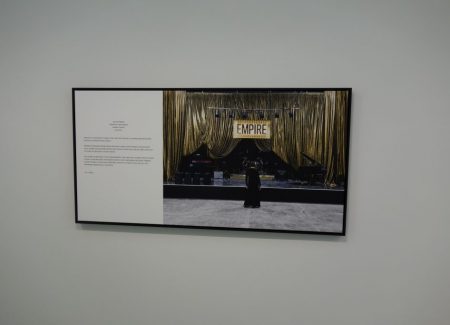

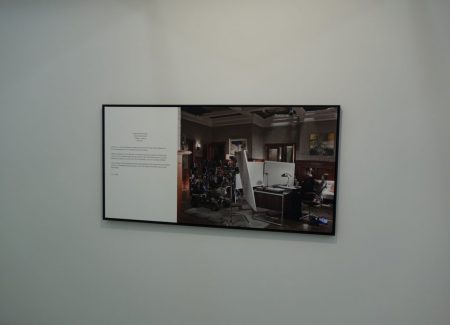


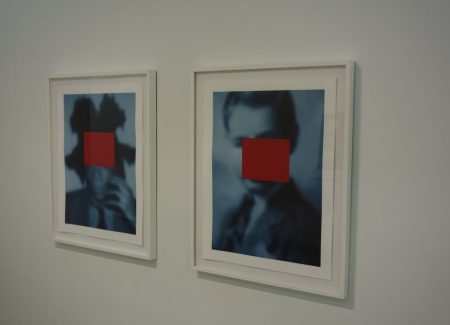
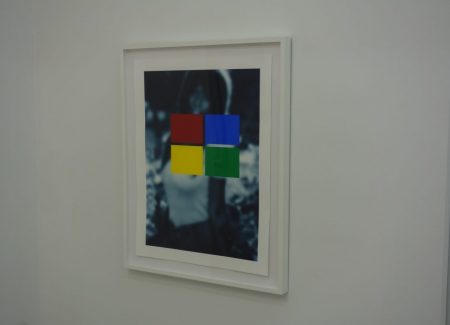

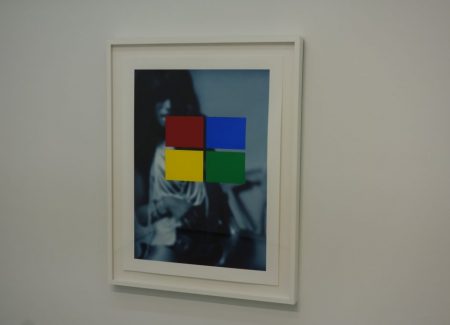
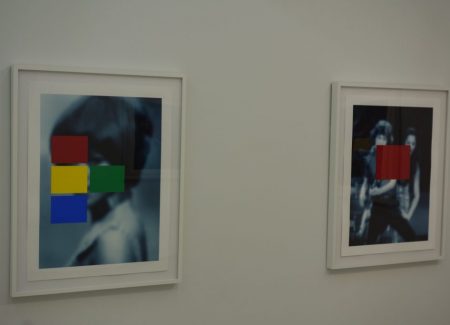
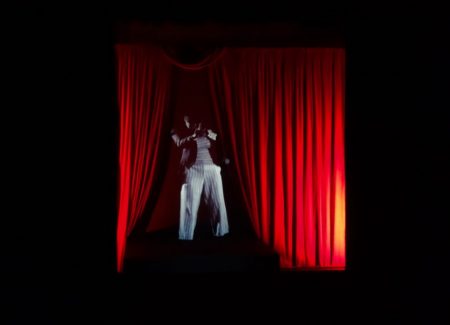
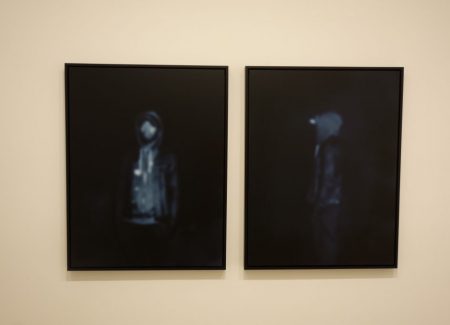

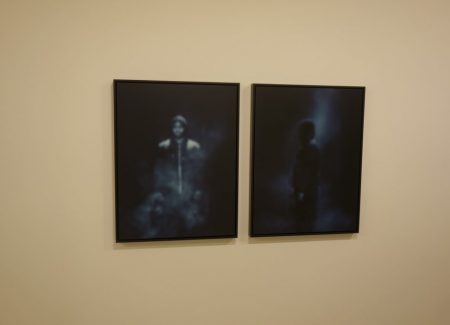

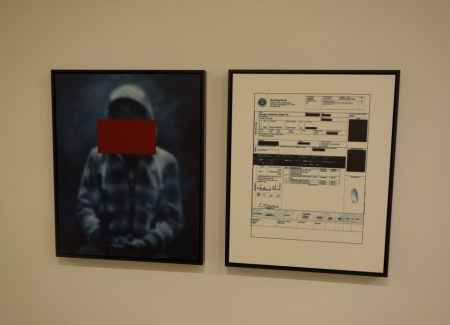






Personally I find ‘All the Boys’ is woeful as a response to what’s been happening, but I imagine the equally dated-looking but stylish ‘Scenes & Take’, classic large-format staged photographs should sell well to museums and affluent collectors, at least. I think there’s a whole lot of contradictions in the work.
Whatever grip of emotion there must have been originally has largely failed to make it to the gallery wall. It’s all an ineffectual exercise, and a lite-bite for a like-minded audience.
What’s lacking is challenge, intellectual and artistic, unpredictability or inventiveness. Obviously what would have been electrifying is if she’d decided to go after Obama. And why not?
Political art is almost impossible to pull off, and it’s probably unfair of me to pick on Weems but, for me, this falls way short and she needs to be called out on it. I’d like to see her let go and do something elementally surprising and honest. While work at this level might have been important in 1986 say, it isn’t in 2016. The world has moved on.